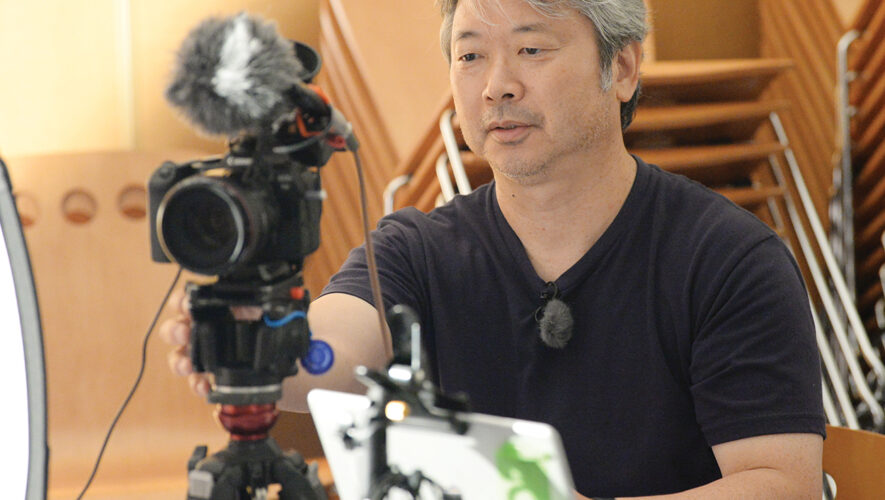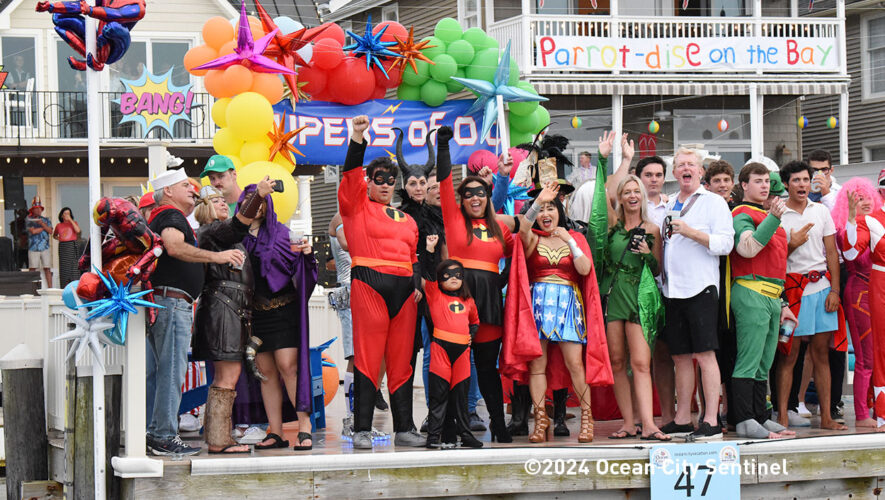Japanese film about nuclear contamination with local connections being screened in U.S.
Editor’s note: To schedule a screening of the film “Silent Fallout: Baby Teeth Speak” with director Hideaki Ito, email burkeshiho@gmail.com or sachi.com@goldensachi.com.
OCEAN CITY — A powerful Japanese film about the impact of radioactive fallout from American nuclear bomb testing will be making rounds in July and August as director Hideaki Ito returns to screen it for audiences in the United States.
Ito, who had produced films on the effects of radioactive fallout meant for Japanese audiences, was inspired for his latest film by a local man’s book on the Baby Tooth Project.
RELATED STORY: The Baby Tooth Project
RELATED STORY: Peace activist inspired by family experience in Hiroshima bombing
This English-language film is meant for American audiences. It is narrated by actor Alec Baldwin.

Initiated in 1958 by a combination of concerned scientists and mothers (some were both), the project studied the effect of more than 200 above-ground nuclear bomb tests that began in post-World War II America.
The tremendous explosions in Nevada and on distant islands in the Pacific Ocean sent radioactive materials miles high into the atmosphere, where they were carried by the winds across the United States and brought to Earth by precipitation. From there they entered the food supply, in part through milk.
The study collected and tested baby teeth for strontium-90. The element is absorbed into teeth like calcium, but rather than the health benefits of the latter, can have deleterious effects.
The film “Silent Fallout: Baby Teeth Speak” was inspired by the book “Radioactive Baby Teeth: The Cancer Link,” published in 2008 by Joseph Mangano, executive director of the Radiation and Public Health Project. The project is studying the effect of fallout from nuclear bomb testing and from emissions from nuclear reactors, using the teeth from the original study from the late 1950s into the early 1960s.
Ito’s film features interviews with scientists and survivors, many known as “downwinders,” whose families suffered the devastating health effects of absorbing the dangerous element strontium-90. Mangano is one of the interview subjects. The interviews are interspersed with scenes of bomb testing, views of test sites and graphics showing the spreading contamination.
“The bombs that got us were the bombs of our own government. It was a nuclear war and we were its victims,” one interview subject says at the beginning of the film.
Another, from the neighboring Salt Lake City area, talks about her own cancer and the cancers and cancer deaths of other “downwinders.” What distresses her is that “the vast majority of the people who were affected by those tests will never know what made them sick.”
“We were just little kids who trusted our government when it said there is no danger,” she added. “It was like being punched in the gut to think my own government did this … and lied about it for years.”
RELATED COLUMN: Editor’s Desk: ‘This is our cry. This is our prayer. Peace in the world.’
There is an interview with the professor who decades later found, in the archives at the University of St. Louis, a box containing materials and a tooth from the Baby Tooth Project and wrote a paper about it titled “Mothers against the Bomb.”
The professor saw the scientific paper by Dr. Louise Reiss, a physician in St. Louis who became concerned that milk was being contaminated by radioactive fallout and headed a committee that initiated the study of baby teeth in 1958. The collection started in an area surrounding St. Louis but later expanded far beyond.
The government tried to label the committee as communist sympathizers and convince the public even though strontium-90 was found in the teeth, it wasn’t dangerous, the film asserts. It did not stop their work.
The film includes an interview of the doctor’s son, Eric Reiss Jr., born in 1954, who remembered the committee meeting in their home. After his mother published the scientific paper on the study, “Strontium-90 Absorption by Deciduous Teeth” in 1961, Reiss told the director he picked up the phone to hear President Kennedy ask him to speak to his mother.
Kennedy would sign the Partial Nuclear Test Ban Treaty in 1963.
In 2001, boxes of the baby teeth, complete with cards containing information about the teeth, were discovered in a warehouse at Washington University in St. Louis. Those would eventually go to Mangano’s group.
In the film, Mangano, interviewed in the summer of 2022 at the Ocean City Free Public Library, shows the boxes of teeth and information cards and explains the study. (See related story.)
“I’ve been approached over the years by a lot of filmmakers, all very gung-ho, interested in our work,” Mangano told the newspaper, including five specifically interested in the tooth study. In most cases he didn’t hear back from them because they couldn’t raise the funds.
“Ito walked the walk as well as talked the talk,” Mangano said. “He is a journalist who was on TV for many years in Japan and over the past 20 years has turned to documentary making with specific interest in nuclear issues.
“He has made several films, one about the hydrogen bomb tested at Bikini Atoll in 1954, about a Japanese fishing boat that was not that far away and downwind. You can imagine what happened to the crew,” he added.
This time Director Ito’s focus was on the people who lived “downwind” of the United States government testing of nuclear weapons, with the intention to bring the film to both American and Japanese audiences.
When the film was in the development stages in November 2020, the director told Misuzu Sato, a staff writer for The Asahi Shimbum newspaper, that it was time to address the audience halfway across the world.
“The issue could perhaps never be brought to a resolution unless people are told about this fact in a nuclear weapons superpower,” he said in the article. “I hope to set off a movement by letting Americans know that radioactive substances were falling on them.”
He added, “I am responsible for the sufferers I have interviewed.”
Ito interviewed a professor of geology who studies the effects of how elements in soil affect humans. About eight years ago he assigned students on spring break to bring back locally sourced honey from their homes. He found more than half of 150 samples from the eastern United States had radioactive materials in them. The professor said his findings revealed plants are continuing to recycle radioactive materials from nuclear bomb tests, left in the ecosystem from 60 years earlier. What’s more, those materials aren’t mainly from the tests in Nevada, but from the much bigger explosions in the Pacific and in Russia.
Ito told this newspaper, through interpreter Shiho (Kikuzaki) Burke of Somers Point, that his message is that nuclear weapons are supposed to protect countries but actually harm the health of their citizens because of testing that spread radioactive fallout.
He wants that message to get out to the American people, to Congress and the United Nations.
The director has screened the movie at 150 locations in Japan since last year and will be in the U.S. from July 10 to Aug. 20 holding screenings in multiple states.
The director said his film is about “the world’s largest environmental problem — radioactive contamination,” which he believes is worse than global warming.
Through Burke he said, “Why aren’t we talking about this? Japan is not the only country that got bombed because there were hundreds of above-ground tests in the United States and around the world” that spread radioactive materials for thousands of miles.
“How do you justify that?”
His other message is that women had a major impact on policy because they, as civilians and scientists, undertook the baby tooth study and got a scientific paper that ended up in front of President Kennedy, who signed the treaty to ban atmospheric, underwater and space nuclear testing.
“Women can change the world because President Kennedy, if he didn’t ban nuclear testing above ground in the 1960s,” Ito said, “would the U.S. still be here? Would it have been destroyed if they continued the testing?”
There have been more than 2,100 nuclear tests worldwide since 1945 including more than 500 atmospheric tests. The U.S. alone has exploded more than a 1,000 nuclear bombs, including more than 200 above ground prior to the test ban treaty.
– PHOTOS and STORY by DAVID NAHAN/Sentinel staff



